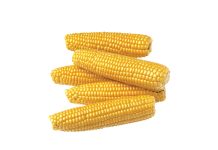
Prof Stephanie Midgley, Western Cape Depart-
ment of Agriculture, Elsenburg; Department
of Horticultural Science, Stellenbosch University

Andries le Roux,
Western Cape Depart-
ment of Agriculture, Elsenburg; Department of Agronomy, Stellenbosch University

Prof Pieter Swanepoel, Department of Agronomy, Stellenbosch University

Prof Johann Strauss, Western Cape Department of Agriculture, Elsenburg; Department of Agronomy, Stellenbosch University

Piet Lombard,
Western Cape Department of Agriculture, Elsenburg

Dr Michael Wallace, Western Cape Department of Agriculture, Elsenburg
In addition to soils, agro-chemical inputs and management, dryland canola production potential is highly influenced by climatic factors such as temperature, carbon dioxide (CO2) concentration, and rainfall amount and distribution.
In the Western Cape, information on the climate drivers of canola growth and seed production can help to decrease the yield gap by identifying current and future areas of medium to high production potential. Furthermore, knowledge of expected future climate risks to canola production can be used to mitigate the risks and implement adaptations.
Canola in the Swartland region
Canola is an important dryland crop in the winter-rainfall Swartland region of South Africa and is widely employed within crop rotation systems. The potential production of canola in terms of yield and suitable planting areas has not yet been exploited under current climatic conditions – in other words, there is a ‘yield gap’.
However, the climate is already changing, and future production potential and suitable areas are very likely to change. This could be both challenging and provide opportunities for production and efficiency increases for this growing commodity.
The range of genetic types available to South African producers, encompassing cultivars that have been bred for specific herbicide tolerances, and cultivars with short to long growing seasons, could provide tools for adaptation and sustainable growth of the industry. While some research in Australia and Canada has focused on canola responses to climatic factors and climate change, no information is available for the South African context.
Recent research conducted for the Western Cape Department of Agriculture (WCDoA) confirms that the Mediterranean-type climate of the Western Cape, where most of the rainfall occurs in the cool months of April to September, is getting hotter (Jack et al., 2022). The trends in rainfall amounts and seasonal distribution are more complex, with indications that autumn (the canola planting season) is getting dryer, especially in the western parts of the province.
When climate modelling was conducted for various climate change scenarios for the mid-century, the results were consistent with modelling for other Mediterranean climate regions where canola is produced. The future climate of the Swartland will be increasingly warmer, with more hot days and dry spells, and likely with longer-term decreases in seasonal rainfall.
Climate change is driven largely by CO2 emissions into the earth’s atmosphere, which is also an important factor to consider when studying the response of canola plants to current and future climate. This article provides a brief background to a research project currently underway.
A climate study
In a quest to unlock the full potential of canola cultivation, scientists from the WCDoA and Stellenbosch University (SU) are currently conducting a study to explore the potential impact of climate change on canola crops in the Swartland and to assess the present and future canola production potential for the region.
The study focuses on increases in temperature and atmospheric CO2 concentration. Additionally, they are investigating how climate variations affect the actual yield of various canola cultivar types in field trials. The Protein Research Foundation financially supports the project. By understanding the interplay between climatic factors and canola cultivar types, strategies that will optimise canola yields can be developed to ensure its successful cultivation despite changing environmental conditions.
Andries le Roux, a PhD student from the Department of Agronomy at SU, is conducting the research in three parts, supported by the larger research team. Firstly, the effect of current and future climate on canola production in the Swartland region is explored through a series of pot trials inside a climate-controlled phytotron. Two crucial climatic factors, air temperature and atmospheric CO2 concentration, are simulated for current and future scenarios.
Secondly, the study focuses on canola production under field conditions to build upon and test the results of the phytotron experiments. Over the past twelve years, canola cultivar trials have been conducted by researchers at the WCDoA, particularly at the Langgewens research farm near Moorreesburg. Precise measurements of canola yield, together with weather and other environmental factors, have been recorded for the various cultivars included in these trials. Further canola trials and detailed data collection at Langgewens are planned for the next three years as part of this project.
Canola cultivars used in the pot and field trials are categorised into distinct classes based on two factors: growing season length (short and medium for pot trials and short, medium, and long for field trials) and cultivar type (conventional, Clearfield-tolerant, and triazine-tolerant). Climate data including day and night temperatures, stress-inducing (high) temperatures during certain critical growth stages, and rainfall patterns during different growth stages will be meticulously analysed concerning crop phenological development and yield.
The third part of the study will entail canola crop modelling employing the Agricultural Production Systems Simulator (APSIM) model to establish the current and simulated future canola production potential in the Swartland. APSIM is an integrated model that effectively mimics biophysical processes in agricultural systems, considering ecological outcomes of various management practices for the present climate and climate change. It encompasses plant, soil, and management modules, accommodating a diverse range of crops, soil profiles, and management practices suited to Australian conditions.
By incorporating South African canola cultivars, the Swartland’s predominant soil profiles, climate, and diverse management practices, the model will be adjusted to simulate the current canola production potential for this locality. Subsequently, different climate change scenarios and a suite of Global Circulation Models will be employed with the model to project the canola production potential and possible changes in suitability across the Swartland region between 2046 and 2065.
Climate’s influence on canola
Canola production, like many dryland crops, is influenced by the region’s local climate, including day/night temperatures and rainfall amount and distribution during the production season. The ideal growing temperature for canola is between 20 °C and 25 °C, while rainfall of less than 450 mm during the production season can result in yield penalties (Robertson & Kirkegaard, 2005).
Climate plays a significant role in canola production right from planting, where it is advisable to sow canola after a sufficient rainfall event or at least 10 mm (with prior rainfall) to 20 mm over a week. Early seasonal planting, with warmer soil temperatures, can improve seedling establishment and growth, along with increasing the vegetative growing season length, ultimately enhancing canola production (Shafighi et al., 2021). Conversely, late planting due to delayed rains in cooler soils negatively affects initial growth and results in reduced seed yield, size, and oil content.
During the vegetative growth stage, the environment continues to play a key role in canola production, particularly concerning plant biomass production, which directly affects yield. Optimal temperatures during this stage promote canola leaf growth and biomass production, leading to higher seed yields. While canola is more drought tolerant during its vegetative stage compared to certain other crops, prolonged water stress can still affect leaf area, though recovery occurs with adequate rains.
Temperature and drought stress during the reproductive growth stage have a more severe impact on canola production than during the vegetative stage. Heat stress, typically observed at temperatures higher than 30 °C during flowering and seed set stages, leads to flower abortion and infertility, reducing the number and mass of siliquae per plant (Dreccer et al., 2018). Moreover, it negatively alters the oil extraction percentage and fatty acid composition of the oil.
Similarly, drought stress during flowering and seed set causes flower abortion, shortens the flowering period, and delays siliqua maturity, ultimately affecting pod numbers and seed size, leading to reduced canola production and decreased seed quality, including oil extraction and fatty acid composition (Elferjani & Soolanayakanahally, 2018).
Future climate effects
A review of the scientific literature was conducted to provide a basis for what can be expected in future as the climate changes in the Swartland. A summary is provided here.
The rise in global greenhouse gas (GHG) emissions, particularly CO2, has already caused an increase in the global average temperature of 1,1 °C since preindustrial times, with projections of further GHG-driven temperature increases of approximately 1 °C to 2 °C and shifting rainfall patterns within the next few decades for the Swartland region. This would lead to more frequent dry spells and droughts, altered seasonal rainfall distribution and amount, and increased occurrences of extreme hot days and heatwaves (Jack et al., 2021). Canola is more sensitive to stressful environmental conditions during the reproductive phase than the vegetative phase.
Elevated atmospheric concentrations of CO2 have a fertilising effect on C3 plants like canola, enhancing plant photosynthesis and increasing leaf area and plant biomass, and ultimately improving canola production. However, studies have shown that higher CO2 levels can cause canola plants to allocate more energy towards vegetative growth rather than reproductive growth, leading to an extended flowering period (Qaderi et al., 2006).
Research specific to the Swartland region indicates the likelihood of a later planting date, an increased occurrence of very hot days and heatwaves during the flowering period, and more regular dry spells throughout the production season. While elevated atmospheric CO2 levels may partially offset the negative effects of heat and drought stress on canola yield, the potential extension of the flowering period under elevated CO2 levels means that temperature and drought will continue to play a critical role in determining canola yield and seed quality in the future.
Acknowledgement
The authors thank the Protein Research Foundation for funding this research project. This article appeared in the Oilseed Focus.
For more information, contact Prof Stephanie Midgley at Stephanie.Midgley@westerncape.gov.za.
References
- Dreccer, MF, Fainges, J, Whish, J, Ogbonnaya, FC & Sadras, VO. 2018. Comparison of sensitive stages of wheat, barley, canola, chickpea and field pea to temperature and water stress across Australia. Agricultural and Forest Meteorology, 248 (September 2017), 275 – 294. https://doi.org/10.1016/j.agrformet.2017.10.006
- Elferjani, R & Soolanayakanahally, R. 2018. Canola responses to drought, heat, and combined stress: shared and specific effects on carbon assimilation, seed yield, and oil composition. Frontiers in Plant Science, 9 (August), 1 – 17. https://doi.org/10.3389/fpls.2018.01224
- Jack, C, Van Aardenne, L, Wolski, P, Pinto, I, Quagraine, K & Kloppers, P. 2022. SmartAgri: Updated climate change trends and projections for the Western Cape. Report submitted to the Western Cape Department of Agriculture, Elsenburg, South Africa. Publications, books and magazines – Western Cape Department of Agriculture (elsenburg.com).
- Qaderi, MM, Kurepin, LV & Reid, DM. 2006. Growth and physiological responses of canola (Brassica napus) to three components of global climate change: Temperature, carbon dioxide and drought. Physiologia Plantarum, 128 (4), 710 – 721. https://doi.org/10.1111/j.1399-3054.2006.00804.x
- Robertson, MJ, & Kirkegaard, JA. 2005. Water-use efficiency of dryland canola in an equi-seasonal rainfall environment. Australian Journal of Agricultural Research, 56 (12), 1373 – 1386. https://doi.org/10.1071/AR05030
- Shafighi, A, Ardakani, MR, Rad, AHS, Alavifazel, M & Rafiei, F. 2021. Grain yield and associated physiological traits of rapeseed (Brassica napus L.) cultivars under different planting dates and drought stress at the flowering stage. Italian Journal of Agronomy, 16 (1648), 1 – 13. https://doi.org/10.4081/ija.2020.1648


















